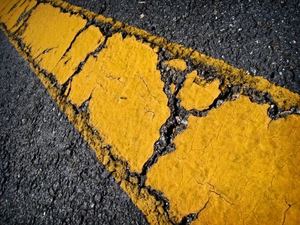A new trial has been granted to a car accident victim who successfully asserted before a state supreme court that the defense misrepresented material evidence.

She had been seeking more than $17,000 in damage, but only received $4,000 at trial; – which was far less than even what defense counsel thought was reasonable under the circumstances.
Now, she will have an opportunity for a retrial after the Montana Supreme Court found that was the only fair remedy for plaintiff, who was unduly prejudiced when defense counsel admitted into evidence photographs of defendant’s vehicle that did not reflect the accident in question, but rather a different collision that happened a year later. Not only that, but defense stipulated when those photos were admitted that the images reflected the damage in question, even though it was later conceded the images were of a different crash.
According to court records in O’Connor v. George, the crash in question occurred in September 2011, as plaintiff was stopped at a railroad crossing. She was rear-ended by another driver traveling an estimated 35-to-40-mph.
Property damage was reportedly minor and resolved among insurers. However, plaintiff asserted she sustained serious physical injuries as a result of the auto accident. Defendant conceded liability, but challenged the extent of plaintiff’s asserted injuries.
In the course of pre-trial investigation, plaintiff requested materials related to the accident from defendant’s auto insurance company. The firm provided her with 12 photos that reportedly showed damage to both parties’ vehicles as a result of the crash.
During depositions, plaintiff was shown the photos for the first time and told they reflected damage to defendant’s car. She did not conduct discovery with respect to those photos. She later sought to exclude them on the basis they appeared to show very minor damage, which would not support her case for serious injuries.
The judge allowed the images, but did agree to a jury instruction indicating that injuries aren’t necessarily determined by damage to the vehicle.
After the jury had been selected – but outside their presence – just before opening statements, it was was revealed those images actually showed damage from the later crash – one in which defendant hit a bird traveling 60 mph. She explained her insurance company mixed up the photos and kept trying to lump both accidents into one claim, which she had repeatedly disputed, and in fact this was the reason she had switched insurance companies.
Plaintiff counsel was surprised because this was the first they had heard of this other accident.
However, the case continued. When defense counsel cross-examined plaintiff before a jury, she mentioned scratches and cracks to the grill of defendant’s vehicle. She was shown some photos and asked if that showed the cracks, and she said she thought it did. She was never told those images were in fact from the crash a year later.
Later, defendant was cross-examined regarding the “bird accident” photos. It was revealed then all the photos were introduced into evidence as stipulated. They were not ever pulled from evidence.
On these grounds, plaintiff called for a mistrial. Defense counsel argued he was obligated to submit all photographs, and it was up to plaintiff to conduct discovery on all that information.
Trial court denied plaintiff motion and allowed the trial to continue. Ultimately, jurors decided in plaintiff’s favor, but awarded very low damages.
On appeal, plaintiff argued jurors were unduly influenced by photos that were material misrepresentation of the facts and should never have been entered into evidence in the first place.
The state supreme court agreed.
First, the lower court held the jury’s verdict could have been based on part on the photos, but was also based on other evidence. The supreme court stated that was true, and the jury was free to infer plaintiff was exaggerating her injuries; however, it should have been able to make that assessment based on fair evidence.
Secondly, the photos clearly affected plaintiff’s credibility in the mind of the jury, meaning she was prejudiced by those images.
Finally, the court found it “disturbing” that defense would assert plaintiff was somehow at-fault for not having taken defendant’s deposition as to the veracity of the photos. Had the defense been forthright and honest when it made its stipulation about the origin of the photos, deposition on this point would have been unnecessary.
Call Fort Lauderdale Injury Attorney Richard Ansara at (954) 761-4011. Serving Broward, Miami-Dade and Palm Beach counties.
Additional Resources:
O’Connor v. George, Sept. 15, 2015, Montana Supreme Court
More Blog Entries:
Labor Day Drunk Driving in Florida Costs Lives, Sept. 4, 2015, Fort Lauderdale Personal Injury Attorney Blog
 Broward Injury Lawyer Blog
Broward Injury Lawyer Blog



